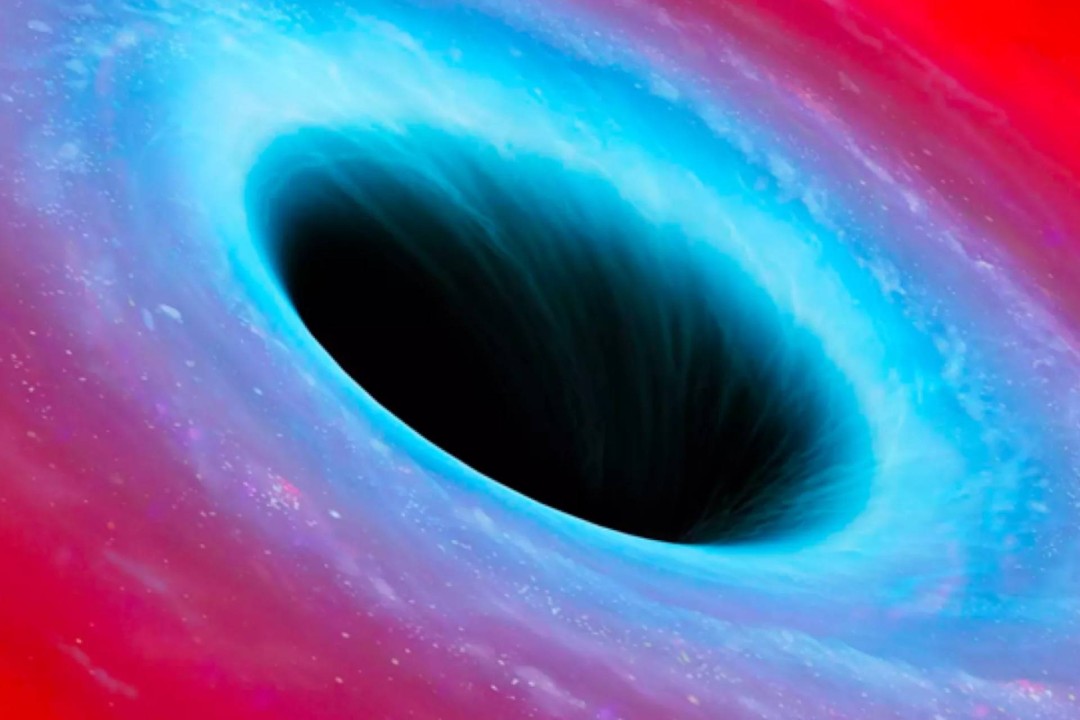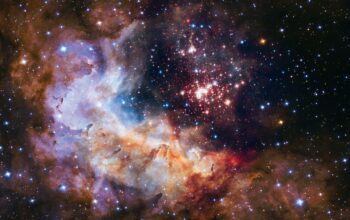In the vast tapestry of the cosmos, the existence of dark matter remains one of the most compelling enigmas of modern astrophysics. Pervading our universe, dark matter constitutes approximately 27% of the total mass-energy content, dwarfing ordinary matter, which accounts for a mere 5%. Despite its predominant presence, it eludes direct detection, leading to a multitude of questions surrounding its nature. How can the universe be so rich in an entity that leaves no imprint on electromagnetic radiation? This inquiry not only posits a conundrum but also invites a playful challenge: What if dark matter is not just an abstract concept, but an entirely new form of matter, beyond the realms of our current scientific paradigms?
The absence of observable interactions marks the first layer of this mystery. Conventional matter interacts through electromagnetic forces and is easily identifiable. In contrast, dark matter interacts primarily through gravity, a facet that has prompted astronomers to deduce its existence indirectly. The rotational velocities of galaxies and the gravitational binding of galaxy clusters expose the gravitational influence of dark matter. Observing how visible matter behaves within these gravitational wells offers tantalizing evidence of dark matter’s presence, yet it provides no clues to its composition.
Historical endeavors pave the path of our current understanding. Initially hypothesized by Fritz Zwicky in the 1930s to account for the mass discrepancies in the Coma cluster of galaxies, dark matter has since commanded attention across various fields of science. The term “dark” signifies its elusive quality; it does not emit, absorb, or reflect light. Instead, its influence is only discernible through gravitational interactions, compelling physicists to probe deeper into its constituents. Numerous particles have been postulated, including Weakly Interacting Massive Particles (WIMPs), axions, and sterile neutrinos. Each theoretical particle presents a tantalizing array of possibilities yet remains elusive in experimental pursuits.
Current methodologies deployed to hunt for dark matter, from direct detection experiments deep underground to collider searches at facilities like CERN, have yielded no definitive results. These experiments aim to capture elusive signals that could signify dark matter interactions. However, the intrinsic nature of dark matter poses a significant challenge; if it indeed constitutes a new form of matter, the experimental frameworks built around conventional particle physics may be fundamentally misaligned with its properties. It is conceivable that dark matter manifests in realms of physics not yet fully comprehended by contemporary science.
Moreover, the gravitational effects evident in galaxy formation and cosmic structure yield further layers of complexity. Simulations of the Universe’s evolution, such as those conducted via the Lambda Cold Dark Matter (ΛCDM) model, illustrate how galaxies coalesce under dark matter’s gravitational tendrils. Yet, discrepancies between observed structures and simulations suggest an incomplete understanding of dark matter’s behavior. New findings from observational astrophysics continue to challenge existing models, creating a vortex of questions regarding the rate of galaxy formation and the influence of dark energy, which complicates the dark matter paradigm even further.
Furthermore, recent developments in astrophysical observations have revealed phenomena such as gravitational lensing, which provides indirect evidence of dark matter’s distribution. As the gravitational field of a massive object warps the light from objects behind it, astrophysicists can map the presence of dark matter in clusters. The question remains: what role does dark matter play in the formation of large-scale structures? Is it merely a scaffolding for ordinary matter, or does it interact with itself in ways yet to be elucidated?
This interplay leads to further speculation. What if dark matter possesses additional properties that defy current understandings of particle physics? Could it have complex interactions with itself, similar to how other particles engage through various forces? The potential for undiscovered physics ignites a flame of curiosity and anticipation among researchers, who remain dedicated to unveiling this cosmic mystery.
Facing such uncertainties, the scientific community recognizes the necessity for innovative approaches. Exploration of alternative theoretical frameworks, such as modified gravity theories or emergent phenomena, may offer a complementary lens through which to examine dark matter. Such theoretical diversification acknowledges the limitations of existing models while fostering a spirit of inquiry towards unconventional hypotheses. Emphasizing creativity alongside rigorous scientific methodology could unlock insights that bridge the divide between the known and the unknown, ultimately illuminating the nature of dark matter closer than ever before.
As the quest progresses, leading theories will inevitably undergo scrutiny, and prevailing hypotheses may evolve or fade in favor of new paradigms. Fresh discoveries, whether unexpected or anticipated, will profoundly shape the narrative of dark matter research. A formidable challenge lies ahead: not merely in capturing the elusive ghost that is dark matter, but in reframing our understanding of the universe woven from both ordinary and extraordinary threads. In an age defined by scientific advancements, the hunt for dark matter remains a testament to humanity’s unrelenting pursuit of knowledge, an odyssey where every step, question, and discovery shifts the boundaries of contemporary physics.
Ultimately, the exploration into the depths of dark matter may usher in new vistas of understanding, casting light upon the darkest corners of the cosmos—an ambition that fosters hope for unearthing the fundamental secrets of our universe.












